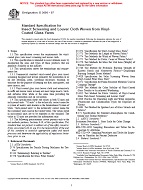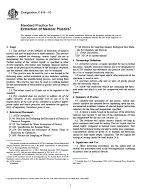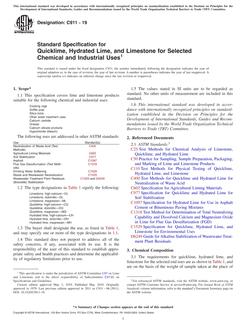1.1 This practice covers several different techniques for determining the stress relaxation characteristics of rubber and rubberlike materials and for the possible interconversion of this stress relaxation information into dynamic mechanical properties.
1.2 The techniques are intended for materials having stress relaxation moduli in the range of 10(3) to 10(8) Pa (0.1 to 1.5 x 10(4) psi) and for test temperatures from 23 to 225 degrees C (73 to 437 degrees F). Not all measuring apparatus may be able to accommodate the entire ranges. These techniques are also intended for measurement of materials in their rubbery or molten states, or both.
1.3 Differences in results will be found among the techniques. Because of these differences, the test report needs to include the technique and the conditions of the test. This information will allow for resolving any issues pertaining to the test measurements.
1.4 The generalized descriptions of apparatus are based on the measurement of force as a function of time. Mathematical treatment of that relationship produces information that can be representative of material properties. Mathematical transformation of the force measurements will first yield stress relaxation moduli with subsequent transformation producing dynamic mechanical properties.
1.5 The values stated in SI units are to be regarded as the standard. The values given in parentheses are provided for information only.
1.6 This standard does not purport to address all of the safety concerns, if any, associated with its use. It is the responsibility of the user of this standard to establish appropriate safety and health practices and determine the applicability of regulatory limitations prior to use.
Product Details
- Published:
- 01/01/1996
- Number of Pages:
- 15
- File Size:
- 1 file , 170 KB


